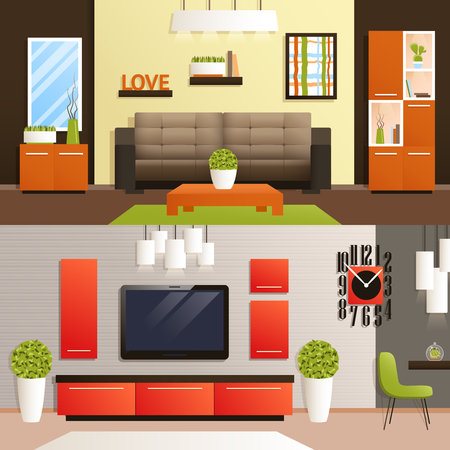Introduction to Virtual Design Consultations
Virtual design consultations are quickly becoming the go-to solution for homeowners across the UK who are seeking professional interior or architectural advice without the need for in-person meetings. In essence, a virtual design consultation is an online session where you connect with a qualified designer or architect through video call platforms such as Zoom, Microsoft Teams, or Skype. This approach allows experts to assess your property remotely, discuss your needs, and provide tailored recommendations, all from the comfort of your own home. The rise in popularity of these services among UK homeowners can be attributed to their convenience, flexibility, and efficiency. Not only do virtual consultations save time by eliminating travel and scheduling issues, but they also open up access to a wider pool of designers who may not be local to your area. With more people looking to improve or maintain their homes post-pandemic and technology making remote collaboration easier than ever, virtual design consultations have become a practical choice for those wanting expert guidance while maintaining control over their projects.
2. Preparing for Your Virtual Consultation
Getting the most out of your virtual design consultation starts with thorough preparation. For UK homeowners, a little groundwork ensures the session runs smoothly and delivers practical results tailored to your property’s unique character. Here are some essential tips to help you get ready:
Gather Clear Photos
Take well-lit photos of the rooms or spaces you want to discuss. Include wide-angle shots as well as close-ups of any features or problem areas. This helps your designer understand the layout and details that may need special attention, from classic Victorian cornices to modern extensions.
Record Accurate Measurements
Having precise measurements is crucial for remote consultations. Use a tape measure to record the length, width, and height of each room, as well as doors, windows, and fixed furniture. Note any unusual features—like sloping ceilings or chimney breasts—that are common in UK homes. Below is a simple table to help you organise your measurements:
| Area/Feature | Width (cm) | Length (cm) | Height (cm) |
|---|---|---|---|
| Living Room | |||
| Main Window | |||
| Fireplace/Chimney Breast | |||
| Other Features |
Collect Inspiration and Preferences
Spend some time browsing magazines, online platforms like Pinterest, or even local home improvement shows such as Grand Designs. Save images that reflect your taste—be it traditional British charm or contemporary minimalism. Sharing these with your consultant helps set a clear direction for your project.
Create a Brief List of Goals
Write down what you hope to achieve from the consultation. Are you looking for more storage? Want to update period features sympathetically? Or do you need advice on eco-friendly upgrades suitable for the UK climate?
Quick Checklist Before Your Appointment:
- Photos taken and organised by room/feature
- All relevant measurements recorded in the table above
- A folder or digital board of inspirational images
- A written list of your goals and priorities for the project
- Your internet connection tested for video calls (especially important in rural UK areas)
This level of preparation ensures your virtual design consultation is productive and tailored precisely to your needs, setting a solid foundation for every step that follows.

3. What to Expect During the Online Meeting
When engaging in a virtual design consultation, UK homeowners can anticipate a structured and professional process that ensures clarity and convenience. Most sessions are conducted via reputable platforms such as Zoom, Microsoft Teams, or Google Meet, which are widely recognised and secure for both parties. Prior to the meeting, you’ll typically receive an invitation link and instructions on how to join, often with guidance tailored for varying levels of digital confidence.
The Typical Flow of a Virtual Design Session
The consultation usually begins with brief introductions and a summary of your project goals. The designer will likely review any information or images you have provided in advance, ensuring they understand your vision and requirements. Next, screen sharing is commonly used to present initial concepts, floorplans, or mood boards, allowing real-time feedback and collaborative discussion.
Effective Communication and Etiquette
UK standards emphasise clear communication and polite professionalism throughout the session. It’s customary to allow each participant to speak without interruption, maintaining a respectful tone at all times. Muting your microphone when not speaking helps minimise background noise—a small but appreciated courtesy. If technical issues arise, patience and politeness are expected while resolving them together.
Follow-Up Actions
Towards the end of the meeting, you’ll discuss next steps, timelines, and any further information required. The designer may summarise key points and agree on how updates will be communicated—usually via email or a follow-up call. This structured approach ensures UK homeowners feel supported and confident throughout their virtual design journey.
4. Customising Your Home Design Remotely
With virtual design consultations becoming more popular across the UK, homeowners now have unprecedented flexibility in tailoring their home improvements to fit both their needs and local trends. Working remotely with experienced designers enables you to co-create a bespoke design plan without ever needing to leave your living room. Here’s how you can make the most of this process:
Collaborating with Designers Online
Virtual platforms such as Zoom, Microsoft Teams, or specialised interior design apps allow for seamless communication between you and your chosen designer. Through video calls and screen-sharing sessions, British homeowners can:
- Share real-time feedback on proposed layouts or colour palettes
- Virtually walk through 3D visualisations of new designs
- Discuss preferences based on current UK home décor trends, such as heritage colours or sustainable materials
Incorporating Local Trends into Your Design
A key advantage of remote consultations is that designers can easily integrate popular British styles into your project. Whether it’s a classic Victorian aesthetic in London or a modern, eco-friendly look in Manchester, your designer will recommend materials and furnishings sourced from trusted local suppliers.
| Design Element | Popular UK Trend | How to Personalise Remotely |
|---|---|---|
| Wall Colours | Muted greens, navy blues, soft greys | View digital swatches and order tester pots by post |
| Flooring | Sustainable wood or patterned tiles | Request samples from local stockists for at-home review |
| Soft Furnishings | Tweed, wool blends, tartan accents | Select fabrics via online catalogues and video demos |
Ensuring Measurements are Spot On
Your designer will guide you through taking precise room measurements using easy-to-follow instructions. Alternatively, some firms may offer virtual measurement tools or even send out a local partner for onsite verification if needed.
Finalising Your Tailored Plan
Once all elements are reviewed and approved digitally, your designer will compile a comprehensive plan complete with mood boards, floor plans, and a recommended shopping list from UK-based retailers. This ensures the end result not only suits your taste but also reflects the latest British design sensibilities—all achieved without a single face-to-face meeting.
5. Reviewing and Approving Design Proposals
Understanding Your Digital Proposal Pack
Once your virtual design consultation has progressed, your designer will provide a comprehensive digital proposal. In the UK, this typically arrives as a secure PDF or via a client portal, including floor plans, mood boards, 3D visualisations, and itemised specifications. It’s important to set aside time to review these documents thoroughly—consider scheduling a quiet evening or weekend slot for this purpose.
Step-by-Step Guidance for Reviewing
- Open Each Document Carefully: Use a reliable device and ensure you have the required software (such as Adobe Reader) to avoid compatibility issues.
- Compare with Your Wishlist: Cross-reference the designs with your original brief and notes from earlier consultations. Make sure all your must-haves are present.
- Assess Practicality and Compliance: Pay particular attention to layout, space usage, and whether suggestions comply with UK regulations (such as Building Regulations or planning permissions).
Offering Constructive Feedback
Your feedback is vital in shaping the final outcome. Most UK designers invite feedback via email, video call, or through an online commenting system embedded in their platform. Be specific: if you feel a colour isn’t quite right for a North-facing room or a suggested fixture may not suit your Victorian property, mention it clearly. Remember British politeness—phrases like “Could we possibly consider…” or “I wonder if it might work better to…” keep communication professional and friendly.
Confirming Final Plans
Once amendments are made and you’re satisfied with every detail, formal approval is needed before moving ahead. In the UK context, this often involves signing off on the final proposal electronically—a digital signature or confirmation email usually suffices. Double-check all details, from material choices to delivery timelines, before providing your approval. This confirmation allows your project to proceed smoothly to procurement and installation phases without costly delays.
Tip:
If in doubt about any technical aspect, don’t hesitate to request clarification from your designer—they’re used to explaining industry jargon in plain English for UK homeowners. Keep digital copies of all approved documents for future reference should any queries arise during implementation.
6. Ensuring Smooth Project Implementation
After completing your virtual design consultation, the real work begins—bringing those carefully considered plans to life in your UK home. Effective coordination with local tradespeople and suppliers is crucial to ensure a seamless transition from digital designs to tangible results. Here’s how you can ensure smooth project implementation following your online consultation.
Review and Clarify Your Design Plans
Before engaging any local professionals, take time to thoroughly review the design documents and recommendations provided during your virtual consultation. Make note of any queries or clarifications needed, as clear communication at this stage will help avoid misunderstandings later on.
Selecting Reliable Local Tradespeople
When choosing builders, decorators, electricians, or plumbers, prioritise those with proven experience in similar projects and strong references within your area. Don’t hesitate to ask for photos of past work or visit completed jobs if possible. Use trusted UK platforms such as Checkatrade or TrustMark to verify credentials and feedback.
Sharing Digital Resources
Provide your chosen tradespeople with all relevant digital drawings, specifications, and mood boards from your virtual designer. This ensures everyone is working from the same vision, minimising errors and costly miscommunications. If needed, arrange a follow-up call with your designer to clarify technical details directly with the contractors.
Liaising with Suppliers
For materials, finishes, and furnishings specified in your design plan, contact local suppliers early in the process to check stock availability and lead times. Many UK suppliers offer samples or showroom visits—take advantage of these opportunities to confirm that products meet your expectations before placing orders.
Coordinating Timelines and Deliveries
Create a realistic project timeline by discussing availability with both tradespeople and suppliers. Factor in possible delays due to weather or supply chain issues common in the UK. Regularly update all parties on progress and adjust schedules as needed to keep the project on track.
Maintain Open Communication
Stay actively involved throughout the build phase by holding weekly check-ins—either on-site or virtually—so you can address any issues promptly. Keep your virtual designer updated as well; many offer ongoing support packages for peace of mind until completion.
Final Checks and Handover
As work nears completion, carry out a thorough snagging inspection with each trade involved. Make sure every element matches the agreed design and functions correctly before signing off. By following these steps, UK homeowners can confidently turn their virtual design plans into a beautifully finished reality—with minimal stress along the way.


